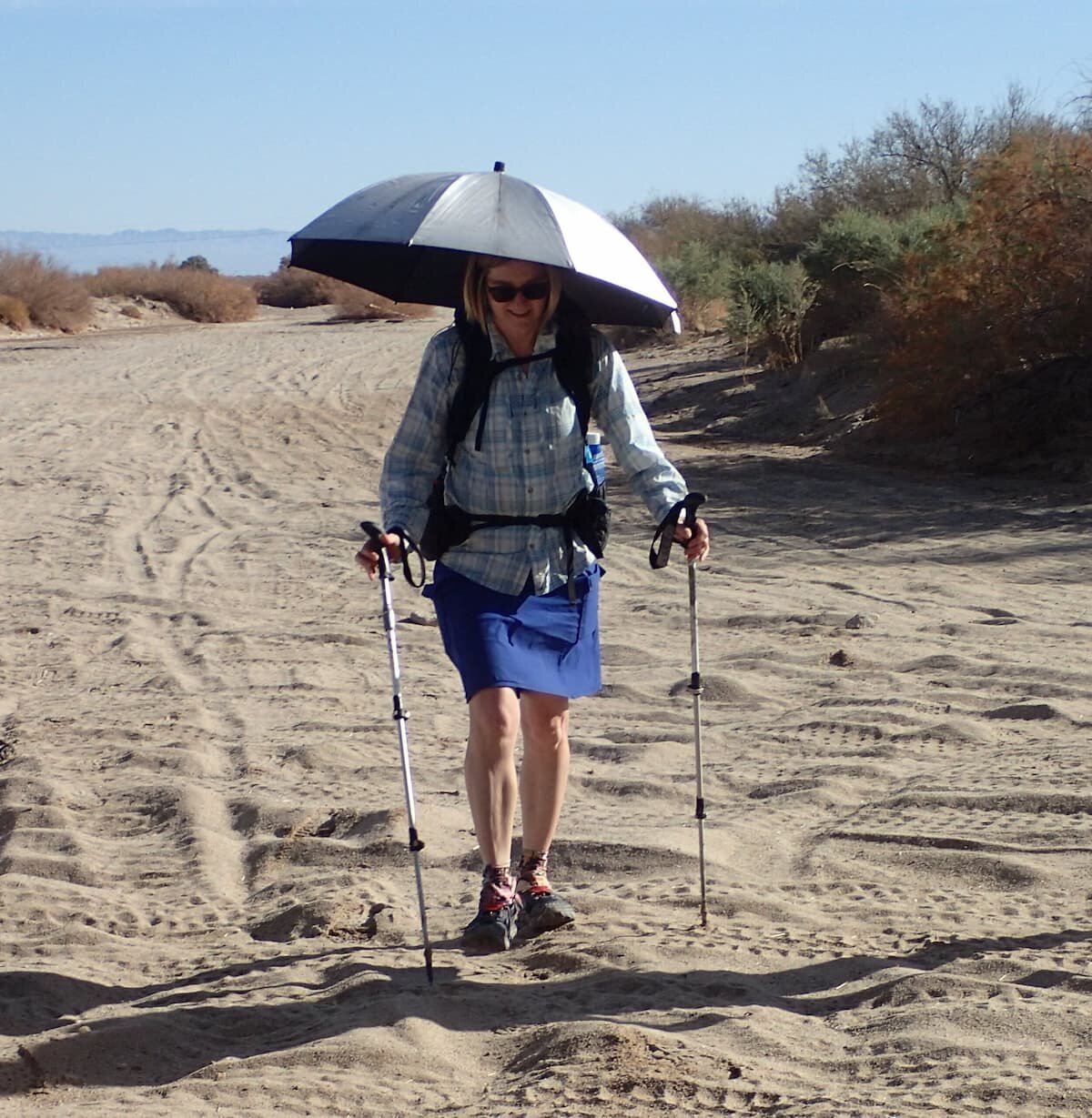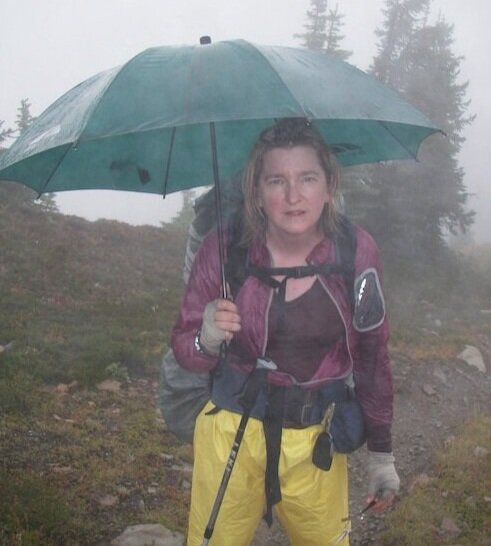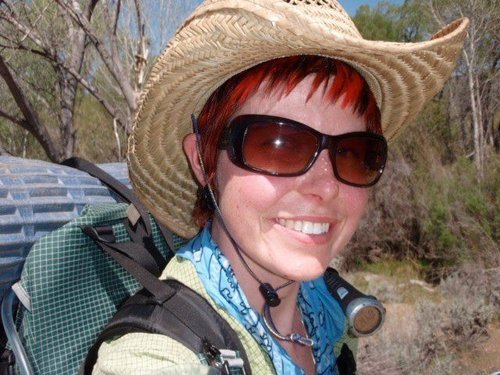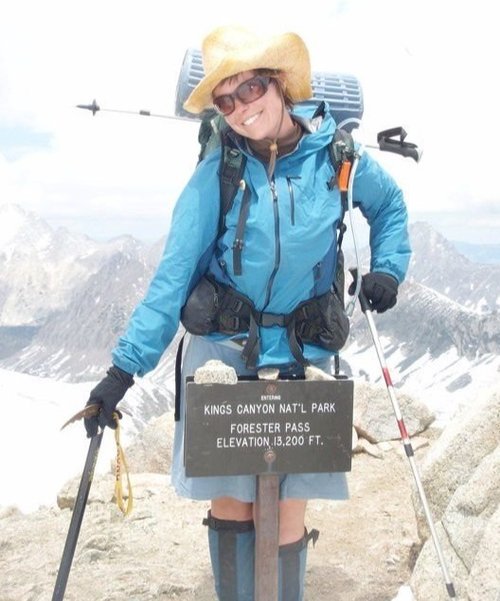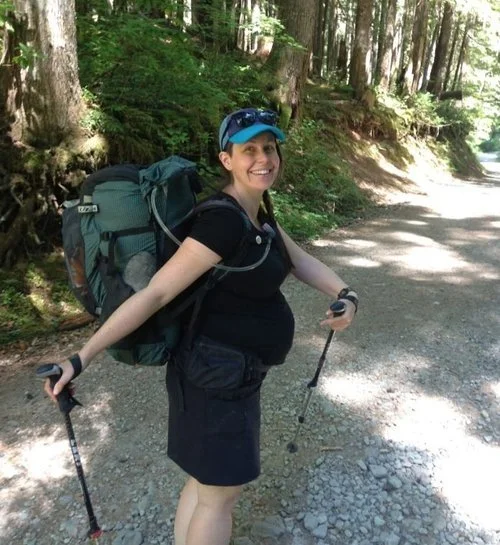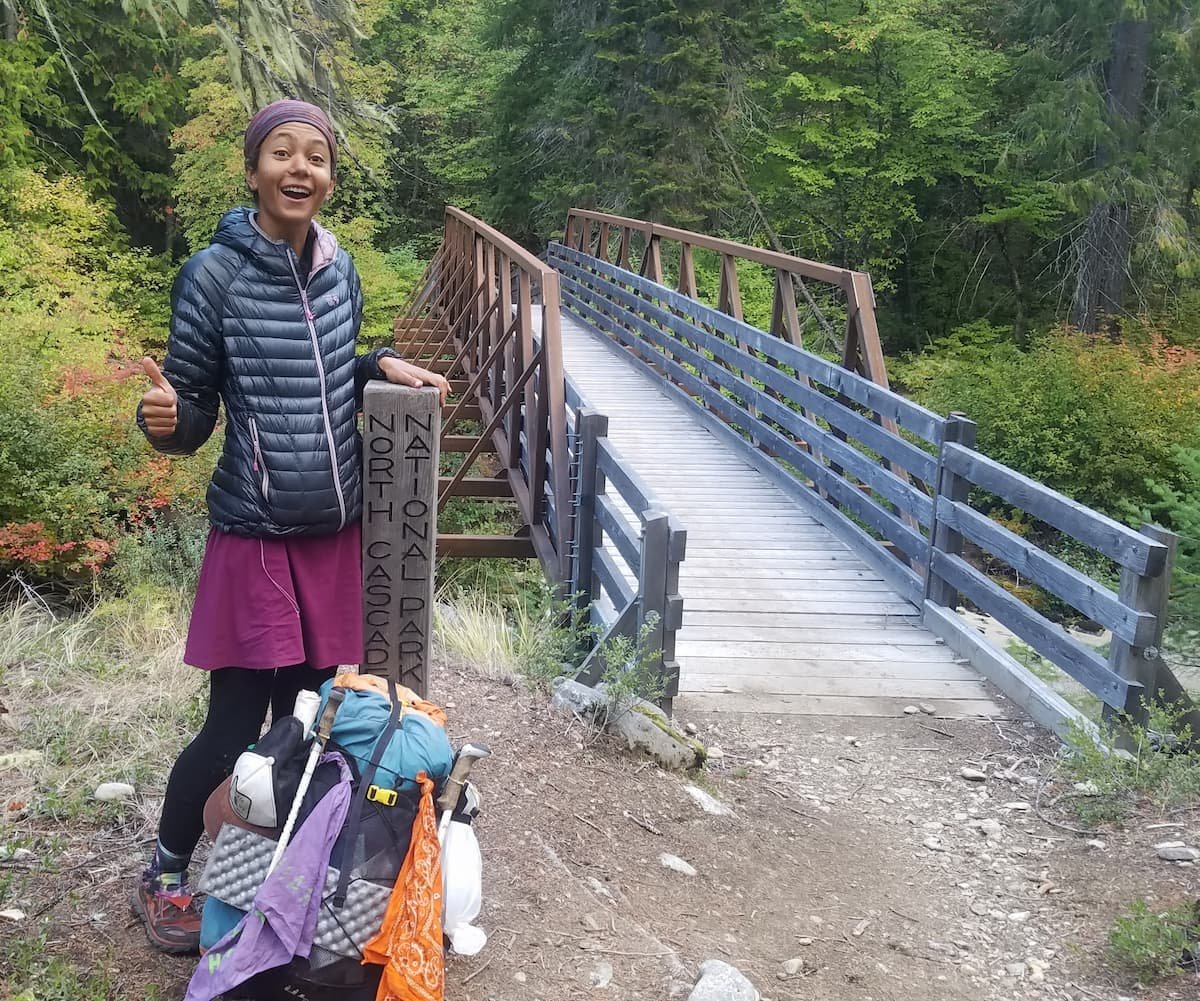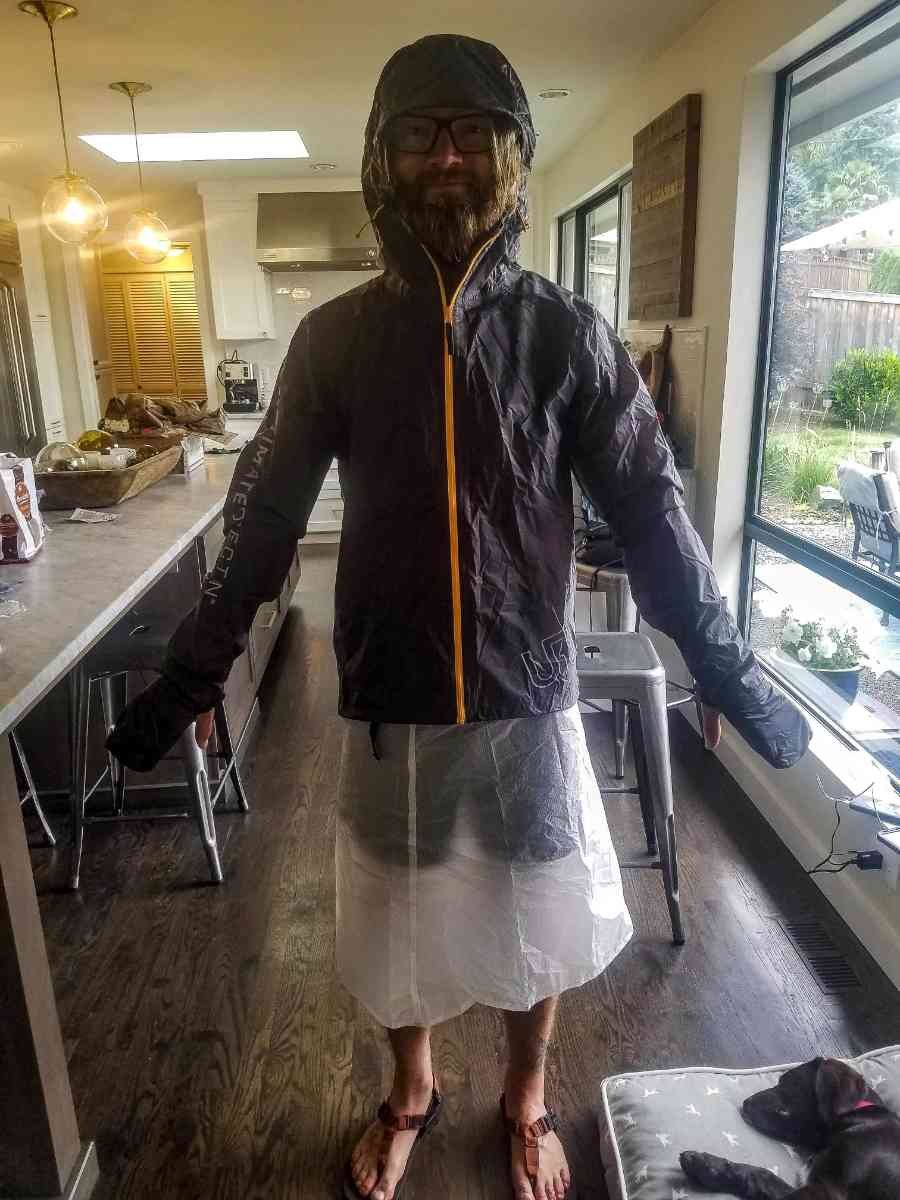Treeline Review Writers Share Their Favorite Gear for a PCT Thru-hike
11 PCT THRU-HIKERS SHARE THEIR TOP GEAR FOR PACIFIC CREST TRAIL BACKPACKING
Updated January 18th, 2025
Home > Staff Picks
Everyone has a favorite piece of gear. We asked 11 of our writers and editors (who have all thru-hiked the Pacific Crest Trail at least once). This list shows what we find to be essential gear items for PCT thru-hikers.
Knowing what to carry on the PCT is one thing, but knowing what I wouldn't carry on the PCT again can be just as helpful.
While you’re at it, we thought you may enjoy some of our favorite Thru-hiking and Backpacking gear stories:
We create reader-supported, objective gear reviews independently selected by our editors. This story may contain affiliate links, which help fund our website. When you click on the links to purchase gear, we may get a commission, without costing you an extra cent. Thank you for supporting our work and mission of outdoor coverage for every body! Learn more.
NAOMI "THE PUNISHER" HUDETZ'S FAVORITE PCT GEAR:
SIX MOON DESIGNS SILVER SHADOW CARBON TREKKING UMBRELLA
There’s no question about this one—my favorite piece of gear on the PCT was my Chrome Dome. I’ve always struggled in the heat (even as a little kid), and the sun protection given by the chrome dome is a game-changer for me.
The sun in Southern California is much more intense than I’m used to in my home of the Pacific Northwest, so keeping it off my head and upper body is vital. It also means I don’t have to wear my sun hat when using the umbrella, which cools me off even more.
Treeline co-founder Naomi Hudetz uses her umbrella while hiking in the Southern California desert.
SIX MOON DESIGNS SILVER SHADOW CARBON TREKKING UMBRELLA
Naomi uses her umbrella in the rain in Washington on the PCT. Photo by Mike Unger.
Bonus: the umbrella isn’t just good for sun, but rain!
My umbrella keeps the rain off my glasses and upper body when it rains, which is a huge morale boost. It also keeps rain off my rain jacket so it takes longer to wet out, which can happen after walking hours in the rainI’ll never forget walking into Snoqualmie Pass, WA, during a huge rainstorm and seeing other hikers who looked genuinely miserable.
One hiker, in particular, was drenched to the bone and ready to quit—just 250 miles from the border! I was wet too, but not as wet with my umbrella. The contrast in our morale was palpable.
If you’re using trekking poles, you’ll want a way to attach your umbrella to your pack. Six Moon Designs has a hands-free umbrella kit - and it works great. You can find similar umbrellas from Gossamer Gear, too. - Naomi Hudetz
Treeline editor Liz Thomas in the Sierra on the PCT under Glen Pass with the Feathered friends Swallow. Photo by Naomi Hudetz.
LIZ “SNORKEL” THOMAS’S FAVORITE PCT GEAR:
FEATHERED FRIENDS 20-DEGREE SLEEPING BAG
On a long hike, a quality sleeping bag is my home, solace, and place of comfort (plus, it’s my last line of defense against hypothermia).
After an exhausting day, a sleeping bag becomes the thing I yearn for in those last few miles as the light disappears.
If I were to recommend a mummy bag for the PCT, it’d be the men’s and women’s Feathered Friends 20-degree bag, our recommended sleeping bag in our Best Backpacking Sleeping Bag story, and my current go-to bag. It's our overall winner in our Best Sleeping Bags for Backpacking (multiple years’ running) for good reason.
FEATHERED FRIENDS 20 DEGREE BAGS
WOMEN'S
MEN'S
Liz Thomas in the Sierra under Glen Pass with the Feathered Friends Swallow. Photo by Naomi Hudetz.
The PCT was a much colder hike than I anticipated. Although I don’t think I sleep “cold,” I was glad to carry a solid 20-degree bag.
While the high desert of Southern California was hot during the day, nights in the desert are chilly—especially on windy nights around Mt. Laguna and San Jacinto. I got an unexpected 6” of snowfall on my camp in the Sierra after Kennedy Meadows. After slogging with frozen numb feet for hours each day, I loved my warm, fluffy sleeping bag all the more.
After a cold day of hiking in the rain in Oregon and Washington, everything was made better by crawling into my dry sleeping bag at night. Still, the PCT is a drier trail, so a quality down bag provides better warmth to weight than a synthetic bag.
My friend, and notorious cheapskate, Paul Magnanti says, “A good sleeping bag is the one area where it really pays the best you can afford.”
While quilts like the Enlightened Equipment Revelation, ZPacks Solo Quilt, and Katabatic Palisade are popular among thru-hikers, I think folks heading on their first PCT hike will find a sleeping bag a better choice than a quilt. With quilts, there’s a learning curve. The process of thru-hiking will teach you a lot about yourself and what you need from your gear. Although I use quilts now, I’m thrilled that I chose to use a sleeping bag for my first six thru-hikes. And when it comes to sleeping bags, there is nothing better out there than the Feathered Friends. - Liz Thomas
Miss Information wearing her ULA Catalyst on the PCT in Southern California. The load lifter straps on the ULA Catalyst are one of the features that make it a comfortable pack for long water carries in the PCT’s desert and extra snow and ice gear in the Sierra.
Tiffany “Miss Information” Searsdodd’s favorite backcountry gear:
ULA Catalyst
It was hard to pick just one favorite piece of gear from my Pacific Crest Trail thru-hike because just about everything I carried was essential and made life on the trail more enjoyable. Some of my favorites are already on this list! But I realized none of it would have been possible without a well-fitting pack. For me, that was the ULA Catalyst.
You can read more in our in-depth, long-term review of the ULA Catalyst backpack.
ULA CATALYST BACKPACK
When picking out a pack, it is essential to find one that fits your body well and is designed to carry the amount of pack weight you will be carrying.
A good starting point is to determine your base weight (all non-consumable carried gear) and then extrapolate your total carried weight based on trip length and type. Most brands list a total recommended weight capacity for their packs. Then, if you can, get a fitting done by a professional pack fitter. Most gear shops offer this service, but if that is not feasible, you can check out this video on adequately fitting a backpacking pack.
Read More: The Best Backpacking Backpacks
Miss Info at Forester Pass, the highest point of the PCT, wearing her ULA Catalyst. Its larger capacity could handle a bear canister, cold weather gear, and an ice axe with ease.
Looking at what other people recommend is a good place to start (check out our guide to Best Backpacking Backpacks for a place to start), but don’t get a pack just because it’s popular; get it because it’s the best backpack for you.
I used the ULA Catalyst, the bigger cousin of the more popular ULA Circuit, for my entire PCT thru-hike.
Initially, I got the Catalyst because it is rated for comfort up to 40 lbs.
I was new to ultralight and lightweight backpacking and had a base weight of 22 lbs. I wanted something that would comfortably carry that plus 2 gallons of water in the desert or a bear canister and ice ax in the High Sierra.
Read more: How to Pack a Backpacking Backpack
Even after I got my base weight down to about 13 lbs, I stuck with the Catalyst because of one simple thing; it was more comfortable on my back than any other pack I tried. In this way, backpacks are similar to footwear; a good fit is essential to having a good time.
Two features distinguish the Catalyst from lighter weight packs on the market.
First, the Catalyst has an internal frame sheet with two aluminum stays that provide excellent support for larger loads. Many Ultralight packs have less burly frames that will be uncomfortable with heavier loads.
Read More: How to Choose a Backpacking Backpack
Miss Info backpacking with the ULA Catalyst while pregnant several years after finishing the PCT. The ULA Catalyst has remained a trusty pack and is now handy for carrying family gear.
The second feature of the ULA Catalyst that distinguishes it from other packs are the load lifter straps. These connect the shoulder straps to the main body of the pack. When adjusted properly, they shift the weight closer to your body, eliminating the feeling of the pack pulling you backward. Load lifter straps also reduce the pressure on the front of your shoulders, which can get uncomfortable by the end of the day. See the first photo of me in this section for a good close up of the load lifter straps
My child was born four years ago (and several years after my PCT thru-hike). Now that we're beyond needing a Baby and Toddler Carriers for Hiking and can go backpacking again, I carry the extra weight of her gear and a family-sized tent. I been grateful for the Catalyst’s extra weight capacity of the Catalyst to carry this gear on my post-PCT backpacking adventures. Although I have had to do minor repairs and replace the hip belt since buying it, my pack it’s still going strong.
I’m still using the same Catalyst I used on the PCT, which now has about 4,000 total miles on it (including a JMT thru-hike). - Tiffany Searsdodd
Treeline writer Mike Unger on the PCT in the Sierra wearing his Patagonia Houdini Jacket.
MIKE “FE MIKE” UNGER’S FAVORITE PCT GEAR:
PATAGONIA HOUDINI JACKET
I have carried a Patagonia Houdini wind shirt on every long hike (including two complete Triple Crowns–the Appalachian Trail, PCT, and Continental Divide Trail). It has been my single favorite piece of gear on every long hike.
PATAGONIA HOUDINI JACKET
MEN'S
WOMEN'S
I’ve owned three Houdini Jackets over the last 13 years, 25,000+ long trail miles, and three separate end-to-end PCT thru-hikes. I also carry the Houdini on all weekend trips and most day hikes. I wore it nearly every day of my most recent PCT hike (as well as every other long hike). The Patagonia Houdini is perfect for cool mornings and evenings when a down jacket or synthetic jacket would be too warm. It can also be worn under a puffy jacket when they aren't enough. The Houdini provides excellent mosquito protection. It is essential for my cold-weather layering system.
I know some folks think lightweight rain jackets make a wind shirt unnecessary. I disagree. I think a wind shirt is much more versatile. It is more comfortable to wear in mild conditions. Its pocket becomes a stuff sack, and it is compact enough to be carried in your pants/shorts pocket. Additionally, casual use of your rain jacket can clog up its waterproof membrane and make it less effective in the long run. Frequent use of rain gear when it’s not raining can also degrade its long-term durability. In contrast, a fast-drying windshirt with a Durable Water Repellent (DWR) treatment can be all you need in warm light rain.
I think a windshirt is essential and among windbreakers, I think the Houdini is the best for hiking. It's a winner in both our Best Men's Windbreakers and Best Women's Windbreakers guides for a reason–it's that good. -Mike Unger
Treeline editor Brandon Lampley on a blustery day.
BRANDON “PAJAMAS” LAMPLEY’S FAVORITE PCT GEAR:
BIG AGNES FLY CREEK HV UL 2
I should say that I much prefer cowboy camping to tent camping, but the hero of the movie on my NOBO PCT thru-hike was the Big Agnes Fly Creek HV UL2.
I reached the Canadian border just before Halloween, and the Fly Creek was just the shelter I needed for Oregon and Washington when the weather changed to wet. It’s light, great in the rain, good in high winds, and roomy for one plus gear... and enough room to cook in the vestibule! This tent made my trip awesome.
BIG AGNES FLY CREEK HV UL 2
The Big Agnes Fly Creek in the Sierra on the PCT. This backpacking tent is among the most popular for thru-hikers. Photo by John Carr.
As a NOBO hiker who started in late April, the weather in the desert and High Sierra were just perfect for cowboy camping. I carried a small, flat tarp set up with a trekking pole all the way to Ashland, Oregon. The weather was generally awesome, and I only pitched my tarp three times in Northern California. My tarp made a nice, big ground cloth for cowboy camping.
Knowing I’d face rain and then snow on the last 1000 miles, I happily purchased and shipped the semi-freestanding Fly Creek to Ashland. I comfortably passed rainy nights and mornings near Crater Lake while my tarp-dwelling companions got quite wet in blowing rain.
In the Fly Creek, I can just sit up inside (even as a 6+ foot tall person), and there’s room enough for costume changes. The fly gives good coverage of the inner tent to prevent most splashes from getting to the mesh.
The bathtub floor stops runoff soaking me from below. We got snowed on pretty regularly in Washington, and I was psyched to have a tent. The Fly Creek is lighter than the similar Big Agnes Copper Spur, which won best overall tent in our Best Backpacking Tents guide. Carrying the 2-person version adds some weight, but for a hiker over 6 feet like me, it was worth it for the added space, especially with wet gear.
I like sleeping under the stars and will always cowboy camp when I can. But during reliably rainy or snowy seasons, I want a tent. The Big Agnes Fly Creek gave me the warmth I wanted to finish my PCT hike, especially when it was windy. It was a refuge from the rain and snow. You're not likely going to need a 4-Season Winter Tent for the end of your trip, but depending on when you start and finish and your year's weather, a solid, reliable, lightweight tent may be just what you want for your PCT hike. -Brandon Lampley
Related: The Best 4-Season Winter Tents
Treeline writer Katie Gerber is a thru-hiker with many miles under her feet.
KATIE “SALTY” GERBER’S FAVORITE PCT GEAR:
THERM-A-REST NeoAir XLite NXT
My Therm-a-Rest NeoAir XLite NXT sleeping pad was my favorite piece of gear on the PCT, and it continues to be a cherished item in my kit. I was tempted to cite my Katabatic Gear Sawatch Quilt as my favorite item because I fantasize about crawling into it every night on the trail. Still, the luxury of the quilt would be far diminished without a good pad beneath it.
THERM-A-REST NEOAIR XLITE NXT
The NeoAir was a gear swap I made early in my PCT hike. I initially carried the Therm-a-Rest Z Lite Sol, a closed-cell foam pad, because I thought it’d be more durable and could double as a sit-pad. However, at an R-value of 2.0, the Z Lite was not warm enough or thick enough to allow me to sleep comfortably. It felt like I barely slept at all those first 200 or so miles. That makes for a rough start to an adventure. Upon replacing the Z Lite with the NeoAir, which has an R-value of 4.5, I immediately began sleeping better. My overall enjoyment of the trail (and my life) improved exponentially.
The NeoAir is a lightweight sleeping pad that provides extra insulation and comfort.
How you sleep is how you hike, and lack of proper rest can massively detract from your outdoor experience. Sleep deprivation not only makes every mile feel like more of a struggle, but it contributes to sugar cravings (for quick energy), brain fog, and poor decision making. I like to be as sharp as possible in the backcountry, particularly when navigating in snow or poor visibility.
The humble sleeping pad doesn’t get much attention, but it’s an essential component of my kit, whether I’m going out for one night or 6 months. While there is some danger in popping an inflatable sleeping pad, I’ve found that with a bit of care, you can avoid that. Paying attention to where you set up camp, clearing off the ground first, and using a ground cloth helps. My NeoAir has lasted over 8,000 miles, including hundreds of desert miles, without getting a hole (though I’d still recommend carrying the included patch kit). There's a reason why the NeoAir has won best overall sleeping pad in our Best Sleeping Pads for Backpacking for five years and counting.
Read More: The Best Camping Pillows for Backpacking
In the spirit of ultralight backpacking, my NeoAir serves multiple functions. In addition to a sleep surface, it also functions as the ‘frame’ (structure) of my frameless backpack. Furthermore, the bright yellow color means it can be a signaling device in an emergency. Although I’ve never done this, it could also be used as a raft or a sled should I find myself in the proper conditions and wanting to give my feet a rest. -Katie Gerber
Read More: The Best Sleeping Pads for Backpacking
Amanda “Zuul” Jameson near the Canadian border at end of her thru-hike at the North Cascades bridge on the PCT.
AMANDA “Zuul” JAMESON’s favorite pct gear:
BACKCOUNTRY BIDET
While I love getting outside and staying outside, being on trail for a week at a time has its drawbacks. One of these is keeping your nether regions clean to avoid infections. That's why my favorite piece of gear on the PCT was a backcountry bidet in the form of a 3 ounce humangear GoToob bottle by humangear or, they make one specifcally made with a bidet nozzle.
Bidets aren't super popular in the US—and if you know what the toilet contraption is, that doesn't mean it translates to the backcountry that easily. Fill this palm-sized travel bottle with purified water. A gentle squeeze provides a pressurized jet to help you clean up after you've dug your cathole (for feces) or used the tree-based facilities (for urine).
You can read more in our guide to best backcountry bidets for other styles and options we recommend.
HUMANGEAR GOTOOB SQUEEZE BOTTLE
HUMANGEAR BIDETTOOB PORTABLE BIDET
Here's how I use mine to do the doo-doo:
STEPS TO USE THE BACKCOUNTRY BIDET:
1. Dig cathole to prep. To get a properly sized 6-8” hole, I recommend using a potty trowel like the The DirtSaw Deuce #2.
2. Sanitize hands ahead of time.
3. Designate one hand for wiping and one hand for the bidet. Put the bidet and your hand sanitizer in easy reach of your bidet hand.
4. Let the magic happen.
5. Once you're finished, spray water from the bidet directly onto your body with your clean hand (clean hand on the bottle).
6. Wipe (yes, wipe) with your wiping hand. Alternate spraying with your clean hand and wiping with your wiping hand until you feel clean.
7. Use the extra water to clean off your wiping hand. I find that 3oz of water is more than enough to do everything, but humangear makes a 6 oz GoToob bottle if you're worried about running out of water.
8. Put the bidet down, and pick up the hand sanitizer with your clean hand. Drop some sanitizer in your dirty hand, and sanitize that hand by itself. Then sanitize both hands together.
For #1, it's even easier: I just spray to clean without touching and drip dry since what's leftover is just water.
The simple 3.4 oz GoToob bottle is the go-to bottle for backpackers who want to try the backcountry bidet.
Using a backcountry bidet can seem strange and unhygienic in a society where we're not used to being intimate with our bodies like this. But I can tell you, in over 3,500 miles of hiking, I have never had food poisoning or any other kind of (usually painful) issues with my digestion or nether region health.
Plus, to my mind, using a backcountry bidet is cleaner than the alternative. I'm not burying my toilet paper (a no-no, particularly along as popular a trail as the PCT), and I'm not carrying it with me either (which seems more unhygienic to me than the backcountry bidet!).
The bidet also acts as a mini-shower, helping to cleanse you a little every day — and you can even add a drop or two of Dr. Bronner's for an extra bit of cleanliness, if you want. (Just be sure you are far from water and don’t get soap in backcountry sources).
A backcountry bidet isn't for everyone. But if you're having trouble believing it works, try getting your hand nice and muddy, and then try to clean that off with just some toilet paper. After a week of "mud" in-between resupplying, you might think a backcountry bidet is a good idea, too. - Amanda Jameson
Liam ‘Hot Take” Purtle on the PCT at Crater Lake National Park.
Liam “Hot Take” Purtle’S FAVORITE PCT GEAR:
Darn Tough Hiker micro crew CUSHION Socks
My favorite gear on the PCT was Darn Tough's Hiker Micro Crew Midweight Sock (men’s and women’s).
Hiking multiple miles a day means that comfortable feet are a must. I struggle with blistered feet; my feet are always uncomfortable in anything I put them in. But, I found that the Darn Tough Hiker Socks were there for me even at my darkest moments.
From the desert to the mountains, you can assume that your feet will be wet from either sweat, rain, or creek crossings.
These socks are made to have “Fast Action Wicking,” which pulls moisture away from the skin and dry quickly.
Whether it was sweat or gorgeous glacier water, I knew that my socks would not stay wet for long. After a couple of minutes in the sun, I was confident these socks would be dry and warm.
Merino wools have incredible technology to be able to warm while wet. Yet they are also temperature regulated, so they don’t feel too warm in the desert. These socks are a PCT thru-hiker must—and they’re also the winner in our guide to the Best Hiking Socks.
DARN TOUGH HIKER MICRO CREW MIDWEIGHT SOCKS
WOMEN'S
MEN'S
Liam “Hot Take” Purtle at the PCT Canadian monument with a close-up on his favorite gear item, the Darn Tough Microcrew Socks.
Sustainability is the best feature of these socks. Not only are these socks made from Responsible Wool Standard wool. These socks are also made to last, so you don’t have to keep buying new ones up, and fewer socks end up in landfills.
Darn Tough has a guaranteed for-life policy and will take back and replace their socks if there is a hole in them due to wear and tear. They are that confident in their product quality. I speak for many thru-hikers when I say that there is no better feeling than a fresh pair of socks on the trail. Thank you, Darn Tough! -Liam Purtle
Sara “Socks” KruglinsKi’S FAVORITE PCT GEAR:
Mountain Hardwear Ghost Whisperer HOODY
I can’t imagine hiking the PCT without one of my trusty Mountain Hardwear Ghost Whisperer Hoody (men’s and women’s).
I took one on my first LASH (Long A$$ Section Hike) of the PCT in 2017. Since then, it has remained a staple for this trail on every thru-hike and section hike. This jacket is one of the lightest on the market while still being warm and toasty. It’s our Ultralight winner in our Best Down Jackets guide and we liked it so much, we wrote a long-term, in-depth review just about this jacket. It is lightweight enough to wear during laundry day in town without overheating in summer. I also found this jacket to be warm enough for the Sierra section in combination with my sleeping quilt at night.
Socks on a trail town on the PCT wearing the Mountain Hardwear Ghost Whisperer Hoody.
The softer 10D Nylon fabric is quieter than other down jackets I have tried. It is a perfect jacket to be part of your layering system. When you have really cold sections, you can wear this over your base layers and add your windshirt or rain jacket with a poncho on top to stay extra warm.
GHOST WHISPERER HOODY
WOMEN'S
MEN'S
Socks in her tent on the PCT wearing the Ghost Whisperer/2.
The Ghost Whisperer has two zippered hand pockets, perfect for storing gloves. I hiked with a friend who stored a nighttime Kula Cloth in her zippered pocket so she didn’t have to hunt for it on late-night potty trips. Since your down jacket becomes a huge part of your town wardrobe, zippered pockets are handy for your phone and wallet. The hood is generous enough to come up and over long hair and a beanie.
I love this jacket so much that I got a second one! I have one that I keep as my “gross” jacket for longer trips and desert hiking, and I have one “fancy” jacket that I can take on shorter trips or use in snowy areas where I can keep it cleaner. My gross one has several thousand miles on it, and I still reach for it regularly. I actually wore it yesterday.
If you take good care of this jacket or even moderately attempt to care for it, it will last you thousands of miles and more. There are so many pretty colors you can find one perfect for you. It is a versatile down jacket, a goldilocks jacket, not too warm or cold, just perfect. -Sara Kruglinski
Trey French's Favorite PCT Gear:
Patagonia SunStretch Shirt
Patagonia designed the Sun Stretch long sleeve as a fishing shirt to excel in hot and humid conditions, but it’s no slouch in the arid climate of the PCT, either. I started wearing the Sun Stretch in anticipation of my PCT hike and have since gone on to wear it on every hike in every condition above freezing temperatures as my base layer.
PATAGONIA SUN STRETCH SHIRT
MEN'S
WOMEN'S
Patagonia uses a recycled blend of nylon for durability and polyester for breathability that just hits the mark for what I want out of a long trail hiking shirt.
It has two durable zippered pockets, one on each side of the buttons, buttons at the cuff that ease the rolling of the sleeves, and a long enough waist hem that runs below a pack with a hipbelt.
It fits on the loose side to encourage airflow but avoids the overly baggy look. I even tuck it in my hiking shorts to look a little more presentable for a hitch (maybe I think it just looks cool, too). The shoulders have a double layer of fabric that has never failed while wearing my hipbelt-less pack, which puts extra weight and friction on the shoulder fabric of the shirt.
I keep my Aquamira pre-mix, sunscreen tube, and chapstick in one pocket, and my phone and sunglasses sleeve in the other. My phone droops a little inside the pocket, but it keeps it handy, and if it’s cold outside, which it often is in the mornings on the PCT, then my phone can keep warm with a healthy battery in my base layer underneath my other hiking layers.
Thrifted shirts along the trail are cool and sustainable, but shirts that will last the full length of the trail and well into the next one are pretty cool, too. -Trey French
Sam Schild's favorite PCT Gear:
Ultimate Direction Ultra Jacket
My favorite gear item from my 2019 PCT thru-hike is the Ultimate Direction Ultra Jacket. Even if it doesn’t rain much on this trail, you still need to be prepared when it does. This rain jacket is incredibly light, it only weighs 6.5 ounces, so you’ll barely notice it in your pack when you’re carrying it. But it has real features to weather a storm when it does rain. This jacket is seriously awesome.
ULTIMATE DIRECTION ULTRA JACKET
MEN'S
WOMEN'S
My favorite feature of this jacket is the integrated waterproof mitts. They stow away inside your sleeves if you don’t need them, and they’re absolutely amazing when you do. I spent hours with my hands inside these small waterproof mittens in sections of the North Cascades hiking through freezing rain, wondering what I would do without them. Every rain jacket should have little waterproof mittens like these.
It also has an excellent hood, with all the adjustment features you’d want for cold, rainy, and windy ridges to keep it from blowing off. This hood has two cinch cords to adjust to your head–one tightens around the crown of your head, and the other adjusts the opening around your face. I often hike with my rain jacket partially unzipped, and a lot of hood won’t stay on your head when the jacket is unzipped. This hood will stay on your head no matter what once you’ve tightened the shock cord to your head. It also has a built-in brim with a small wire stiffener. This prevents water from rolling off the hood onto your face if you aren’t wearing a brimmed hat.
There are a lot of minimalist rain jackets out there, but this jacket is a seriously well-designed, storm-worthy rain jacket that weighs less than most. It also works great as a wind shell. The hood and integrated mitts are designed for cold and windy ridges, and there’s no shortage of those on the PCT.
I still use the same V1 Ultra Jacket jacket I used on my PCT thru-hike to this day, and it’s still holding up really well. I’m shocked that this sub-seven-ounce jacket has survived three years. You can’t get the V1 version of the Ultra Jacket I used anymore, but the current version is improved with pit ventilation. Whenever my Ultra Jacket finally wears out, I’m definitely getting the newest version. - Sam Schild
Runners Up:
Liam “Hot Take” Purtle looking down at his feet and favorite PCT gear, the Darn Tough Midweight socks, at the PCT 2500-mile mark. The Altra Lone Peak shoes he is wearing were a close second for favorite PCT thru-hiker gear.
Sawyer Squeeze
The Sawyer Squeeze water filter is the most popular water among PCT thru-hikers. "The Sawyer Squeeze made it quick and easy to drink filtered water, so I don't have to sit around pumping, waiting for chemical water treatments." -Liz “Snorkel” Thomas
SAWYER SQUEEZE
Hyperlite Mountain Gear Stuff Sack Pillow
"A pillow is definitely a luxury item on a long hike. The Hyperlite Mountain Gear Stuff Sack Pillow is a small stuff sack I would use anyway to carry extra clothes. One reversible side is covered with micro-fleece and can be used as a very comfortable pillow." -Mike “FE” Unger
HYPERLITE MOUNTAIN GEAR STUFF SACK PILLOW
Altra Lone Peak Trail running shoes
Altra Lone Peaks are the most popular hiking shoes on the PCT. “Putting on a brand new pair of Lone Peaks usually feels like putting on a pair of slippers. I can't say I have personally experienced rubbing or comfort issues." -Katie “Wilderness” Brown

